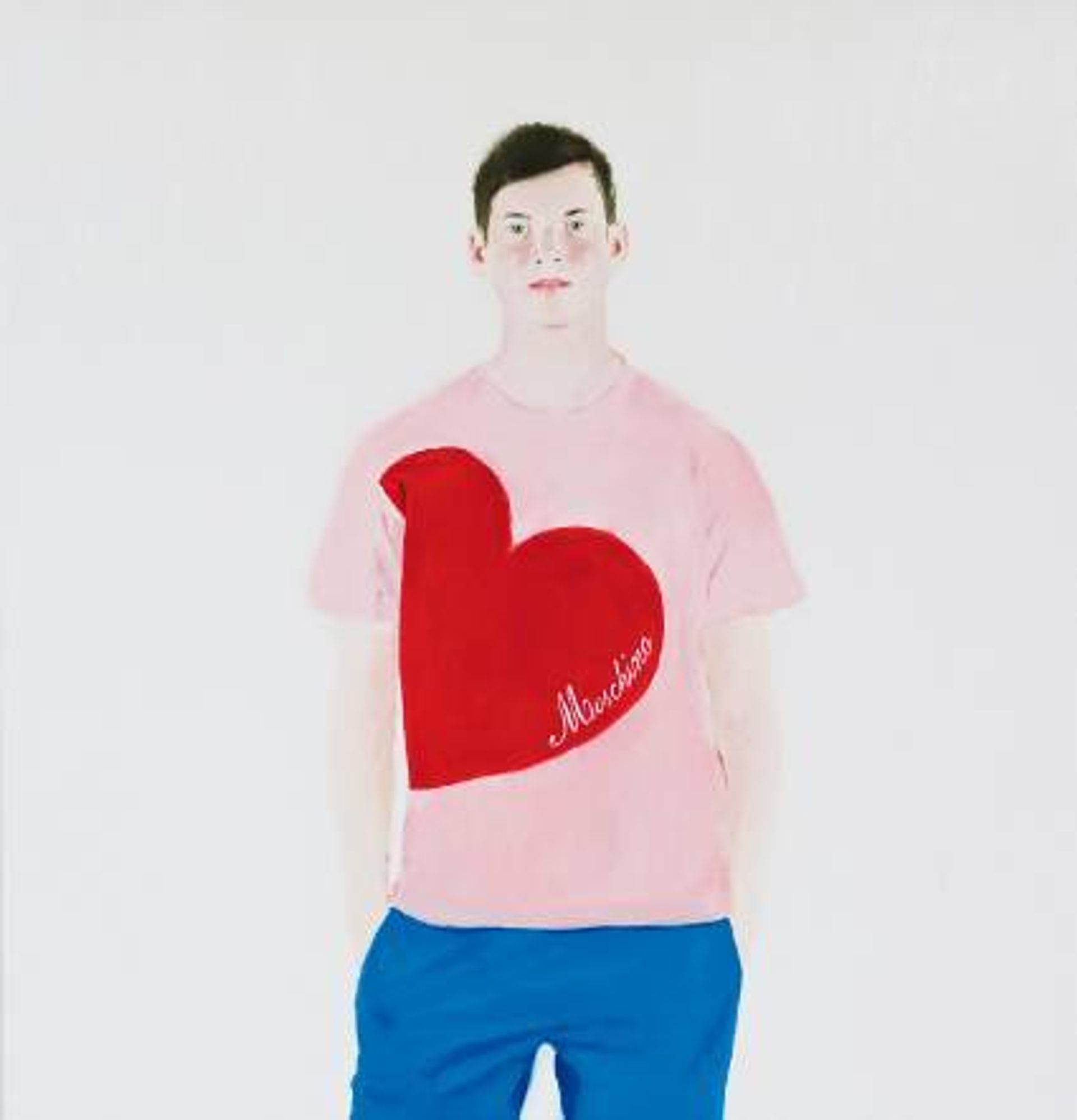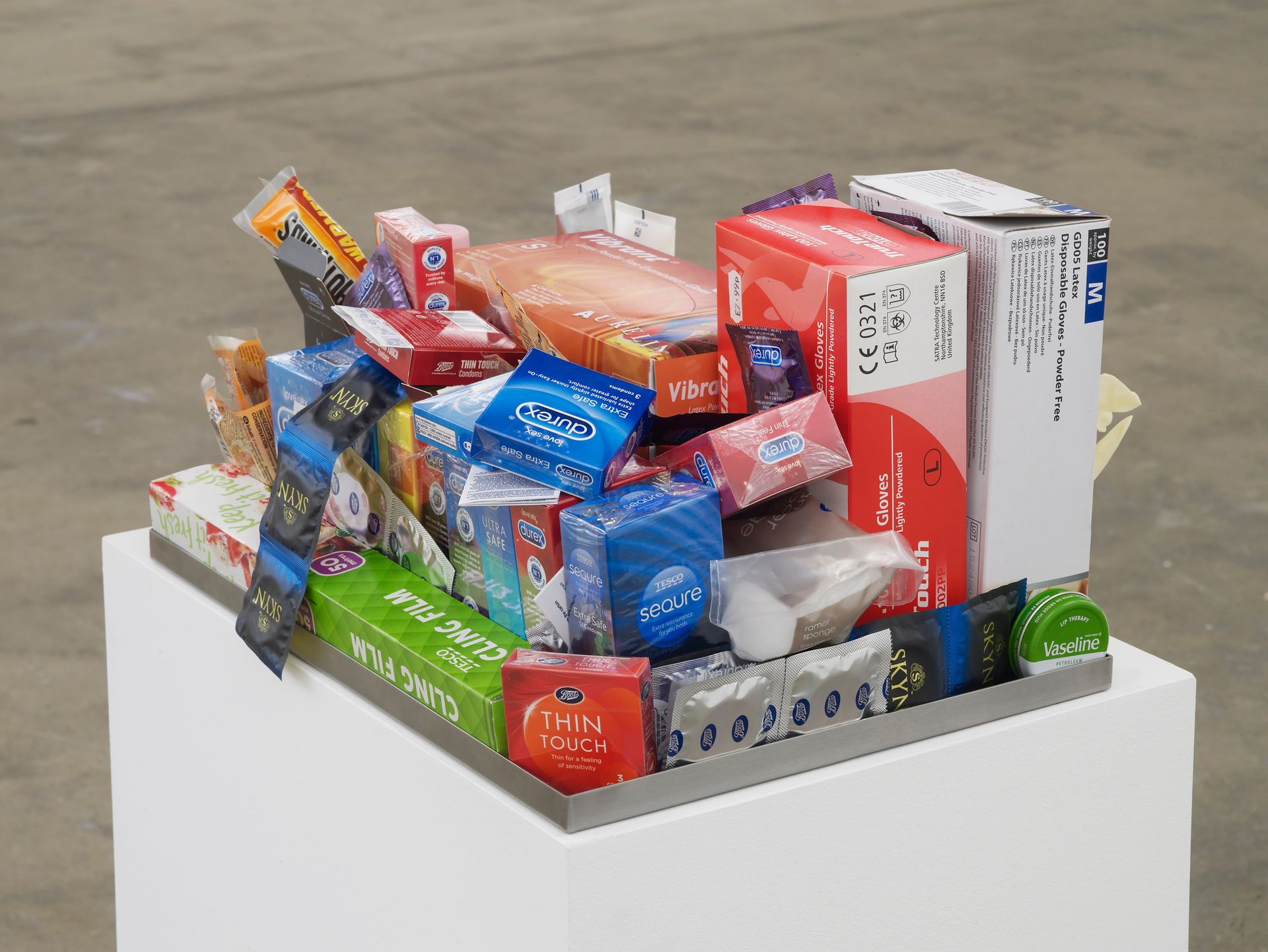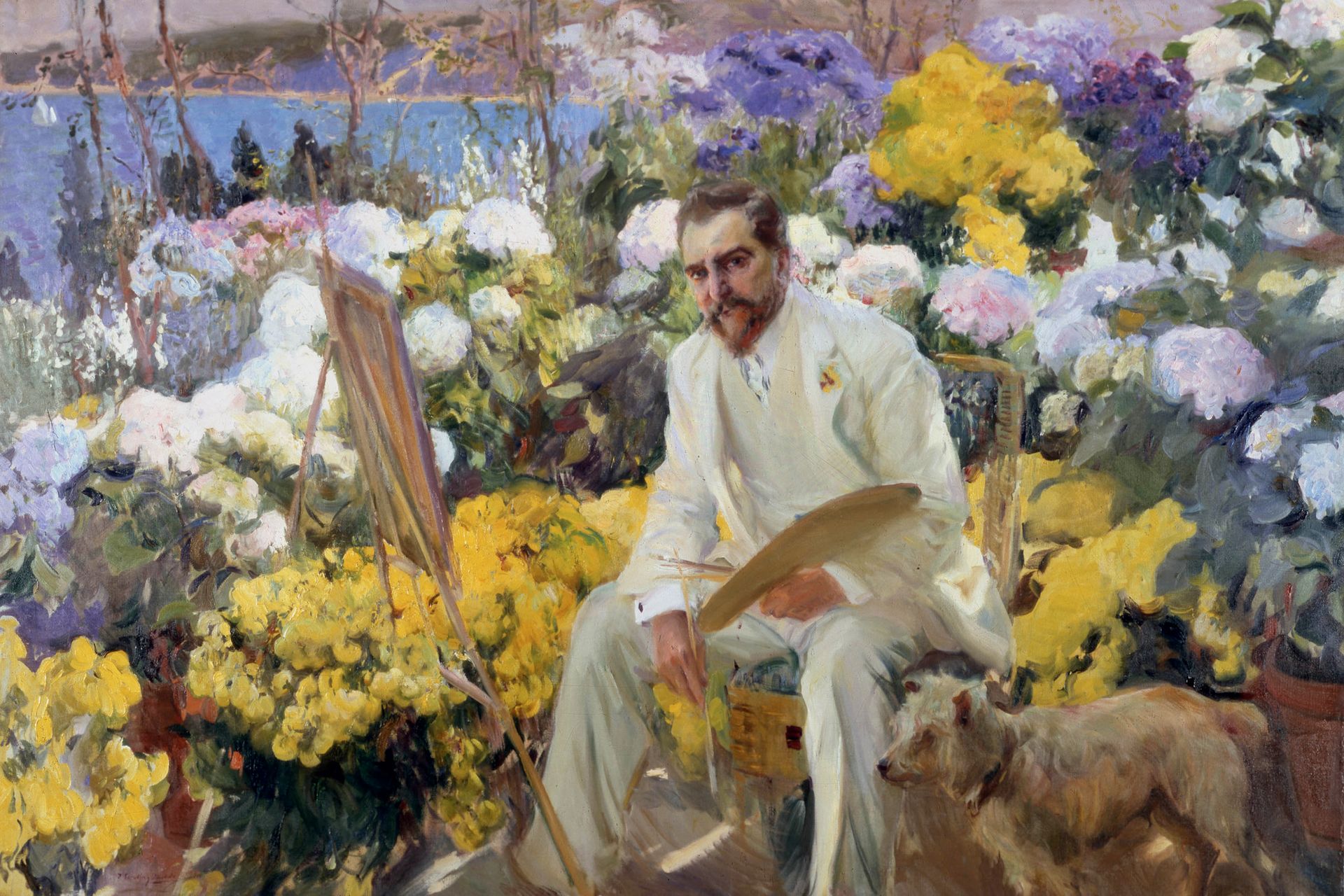Pure Romance: Art and the Romantic Sensibility, Redfern Gallery (until 27 February)

Normally I’d strenuously avoid any romance-themed show opening just before Valentine’s Day, but the range and sheer quality of works brought together by curator Ian Massey transcend the cheesiness of its timing. Boys, ballets and bosky landscapes span from stage designs for Sergei Diaghilev’s Ballets Russes, made by Christopher Wood in 1927, up to Alexander Raho’s portrait of a young boy in a Moschino red heart T-shirt, painted just a couple of years ago. Hearts and flowers are countered by Marc Camille Chaimowicz’s melancholic screen prints, while a pair of tarry memento mori tableaux, by the late Derek Jarman, are a more savage reminder of the cruel prices paid for love.
Pure Romance (1968) is the slightly sardonic title of a deft, delicate painting of palely wilting blooms by Patrick Procktor. The work of this now largely forgotten figure—especially his luminous watercolours of effetely lolling youths—is one of the highpoints of this show. A friend and contemporary of David Hockney, R.B. Kitaj, and Peter Blake, Proctor knew, painted and swung with pretty much everyone in 1960s London. But by his death in 2003 he had sunk into relative obscurity. His work is now appreciated by the likes of Raho and his generation of younger painters, including Silke Otto-Knapp and Kaye Donachie, who are also on show here and who confirm that a romantic sensibility—albeit often of a bittersweet kind—continues to thrive in today’s art world.
Betty Woodman: Theatre of the Domestic, Institute of Contemporary Arts (until 10 April)

The jaunty, vivid ceramics of Betty Woodman, which are currently colonising two floors of the ICA, defy easy description. Vessels morph into figures into plinths and sometimes don a kimono for good measure. Some emerge from painted paper bases, and a lot of posing goes on. Brilliantly coloured rooms are conjured from hybrids of glazed earthenware, resin, lacquer, acrylic paint and canvas and can stretch the length of an entire gallery. Then there are the exuberant curlicues that started life as offcuts but have now been unleashed across a series of walls. Here, emblazoned with a variety of glazed and painted surfaces, they assume a life of their own, sometimes as cavorting, dancing figures or in one instance, a crazy mantelpiece bearing a prancing procession of pots.
It comes as no surprise that in addition to her New York studio the 85-year-old Woodman has also worked for many decades in Tuscany, home to the mysterious ancient Etruscans. These, according to their works of art, were pointy of foot and feature, lovers of dancing and music, as well as creators of fantastical beasts. Along with the influence of Henri Matisse and Pablo Picasso, the Etruscan’s vivacious spirit and delicacy of touch permeates the work of this energetic octogenarian. But at the same time, her voice is always emphatically and wonderfully her own.

Park McArthur: Poly, Chisenhale Gallery (until 3 April)
In ancient Greek, “poly” means “many” or “much”, and the term is certainly given an abundance of expression in this rich and thoughtful show. Polymers are composed of many linked molecular units, whether natural or synthetic, and play an essential and ubiquitous role in everyday life: from DNA to polythene bags. They are also the prime material at the Chisenhale Gallery, where their various qualities, both material and metaphorical are comprehensively explored. Three enormous industrial-sized blocks of dark-grey polyurethane foam, skulk ominously in a corner behind the door. On the walls and floor there are lumpy, fleshy slabs of paper pulp mixed with polymer powder (used in nappies and sanitary towels) that are in a constant slow state of flux as they suck in moisture from their surroundings—including from the bodies of visitors.
In between, the space is punctuated by a group of low plinths bearing metal trays overflowing with a multitude of mass produced, disposable objects—condoms, barrier creams, latex gloves, dental dams and drinking straws—each designed variously to cushion, shield or contain. And which visitors are allowed to take away. Also on offer is a stack of letters announcing the termination, last summer, of the Independent Living Fund for people with disabilities in the UK. All these elements work with and off each other to blur, breach and complicate physical boundaries between bodies, works, visitors and society at large. Let’s hear it for multiple linked units!

Painting the Modern Garden: Monet to Matisse, Royal Academy of Arts (until 20 April)
Although there are blooms galore, this joyfully unseasonal show is more than just a glorious flower fest and a respite from February’s interminable spate of first-name storms. It also provides a floral tribute to the role of the garden as both subject and inspiration for many of the most progressive artists of the late 19th and early 20th centuries who, it turns out, often loved to plant as much as to paint. Top billing goes to Claude Monet, the artist-gardener extraordinaire, whose paintings run throughout the Royal Academy’s rooms, culminating in three late, great, almost abstract paintings of his Giverny water garden, painted as the guns of the First World War boomed in the distance.
Monet’s innovative garden designs—arguably as much as his paintings—attracted visits from many of his fellow artists such as Pierre-Auguste Renoir, Henri Matisse, Paul Cézanne and Gustave Caillebotte, who were usually avid gardeners themselves and all of whom are in the show. Look out for Caillebotte’s definitive image of nasturtiums. Other gems include a stunning—and enormous—pair of Édouard Vuillards, an explosive Wassily Kandinsky, and a terrific pair of spooky little Paul Klees. But it’s not all escapism and leisured reverie: there’s backbreaking hoeing, digging and haulage taking place in Camille Pissarro’s kitchen gardens. And the hard labour that lies behind every blooming flowerbed is also communicated by William Nicholson’s no-nonsense painting of the horticulturist and artist Gertrude Jekyll’s sturdy brown gardening boots.


